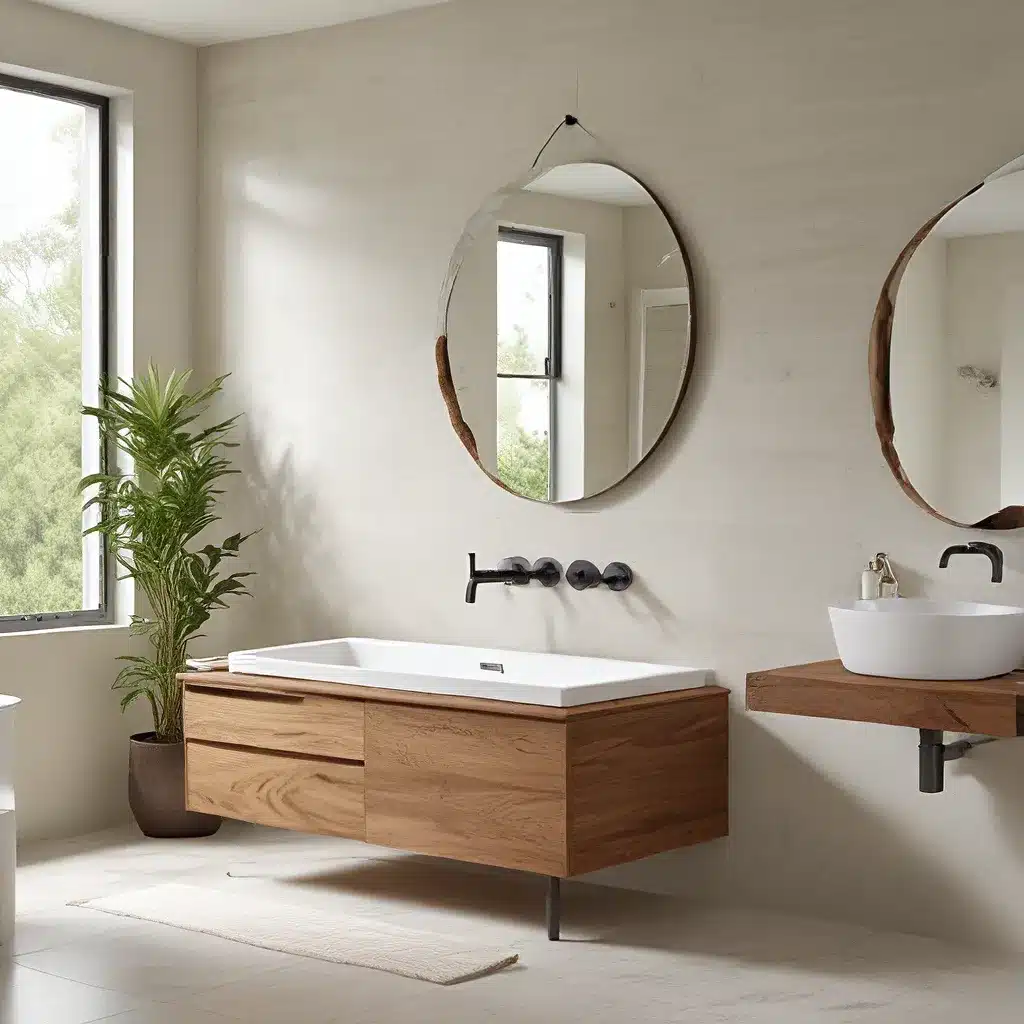
In today’s world, where environmental consciousness is a growing concern, the bathroom has become a critical battleground in the fight for sustainability. As homeowners and designers alike seek to create spaces that not only look beautiful but also contribute to a healthier, more eco-friendly lifestyle, the focus has shifted to washbasins, sinks, and other bathroom fixtures as key players in this transformation.
Choosing Sustainable Washbasin Materials
When it comes to sustainable bathroom fixtures, the choice of materials is crucial. Bamboo, for instance, has emerged as a popular and eco-friendly alternative to traditional wood, offering a renewable and fast-growing option that can be harvested every 3 years, compared to the 25-50 years required for hardwood trees. Bamboo flooring and other bamboo-based products are not only aesthetically pleasing but also contribute to a more sustainable home environment.
Another innovative material gaining traction in the bathroom fixture market is biocomposites, also known as bioplastics. These materials are derived from plant, fungal, bacterial, and even animal sources, offering a sustainable alternative to traditional plastics. Biocomposites are becoming increasingly accessible and of higher quality, making them a compelling choice for homeowners seeking to reduce their environmental impact.
Maximizing Water Efficiency
Water conservation is another crucial aspect of sustainable bathroom design. The EPA’s WaterSense program has made it easier than ever for homeowners to identify and choose water-efficient fixtures, such as faucets, toilets, and showerheads, that can save up to 20% on water usage without compromising performance. By simply looking for the WaterSense label, homeowners can make informed decisions that contribute to a more sustainable water management system.
Addressing Indoor Air Quality
The bathroom is not only a functional space but also a sanctuary where homeowners seek respite and relaxation. However, the materials and products used in this environment can have a significant impact on indoor air quality. Wool insulation, for example, is a sustainable option that not only provides superior thermal properties but also helps to improve air quality by absorbing harmful chemicals like formaldehyde, nitrogen oxide, and sulfur dioxide. Wool insulation is naturally flame-resistant, sound-deadening, non-toxic, and biodegradable, making it an excellent choice for eco-conscious homeowners.
Embracing Renewable Energy
The pursuit of sustainability extends beyond the selection of materials and fixtures; it also encompasses energy efficiency and the integration of renewable energy sources. Solar panels, for instance, have undergone a remarkable transformation, becoming more aesthetically pleasing and seamlessly integrating with traditional roofing materials. Tesla’s solar roof shingles are a prime example of this innovative approach, combining functionality and visual appeal to harness the power of the sun and reduce the home’s overall carbon footprint.
Reducing Waste and Toxins
Sustainability in the bathroom also extends to the selection of paints, finishes, and other materials that can impact the indoor environment. Low-VOC and no-VOC paints, such as Benjamin Moore’s Natura line, are now the industry standard, providing homeowners with healthier options that are free from harmful volatile organic compounds (VOCs).
Furthermore, innovative materials like mycelium, or mushroom roots, are being explored as sustainable alternatives to traditional building materials. Myco Board, for instance, can be used to create particle board-like products that are stronger, more insulated, and completely compostable, without the need for external energy sources during growth.
Integrating Sustainable Bathroom Fixtures
When it comes to integrating sustainable bathroom fixtures into your home, the options are vast and varied. Washbasin Factory offers a wide range of eco-friendly washbasin designs crafted from sustainable materials, such as bamboo and biocomposites, that not only look beautiful but also contribute to a healthier and more sustainable living environment.
In addition to the washbasins themselves, the company also provides a selection of water-efficient faucets and accessories that carry the EPA WaterSense certification, ensuring that homeowners can create a complete sustainable bathroom suite that aligns with their environmental values.
Maintaining a Sustainable Sanctuary
Achieving a sustainable bathroom is not a one-time endeavor; it requires ongoing maintenance and care to ensure that the eco-friendly features continue to perform at their best. Regular cleaning with eco-friendly cleaning products, as outlined in Maidsway’s guide, can help to extend the life of sustainable bathroom fixtures and protect the indoor air quality of the space.
Furthermore, proper installation and attention to potential outgassing from materials like spray foam insulation are crucial considerations, as highlighted in the Green Building Advisor’s discussion. By staying informed and vigilant, homeowners can ensure that their sustainable bathroom sanctuary remains a haven of health and environmental responsibility for years to come.
In conclusion, the bathroom has emerged as a pivotal space in the pursuit of sustainability, and the selection of eco-friendly washbasins, sinks, and fixtures is paramount. By embracing materials like bamboo, biocomposites, and wool insulation, while incorporating water-efficient technology and renewable energy solutions, homeowners can create a sustainable sanctuary that not only looks beautiful but also contributes to a healthier, more environmentally conscious lifestyle. With the right products and a commitment to ongoing maintenance, the bathroom can become a shining example of the power of sustainable design.